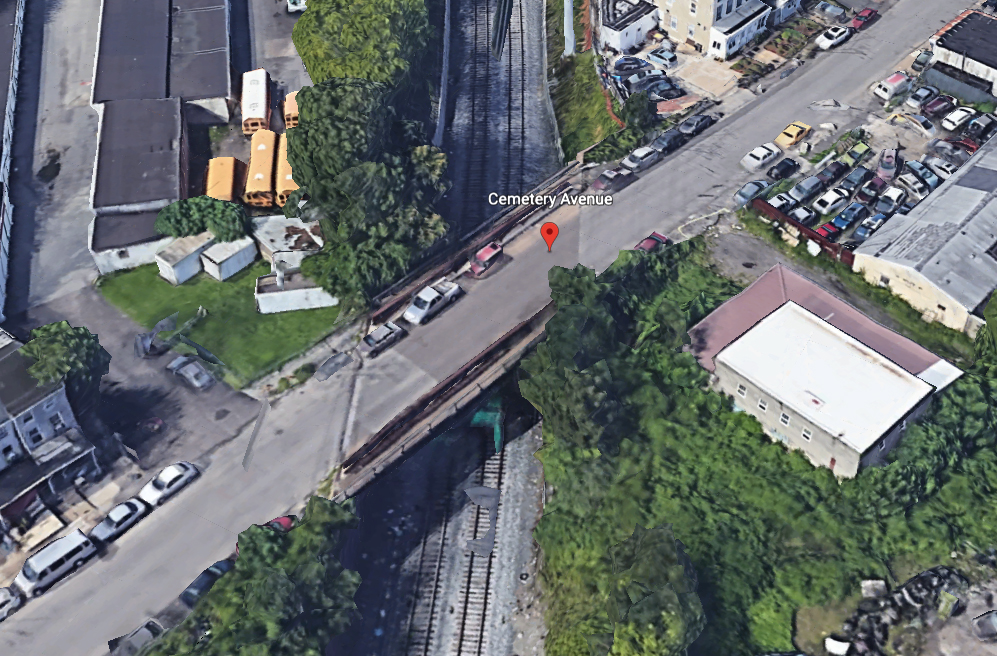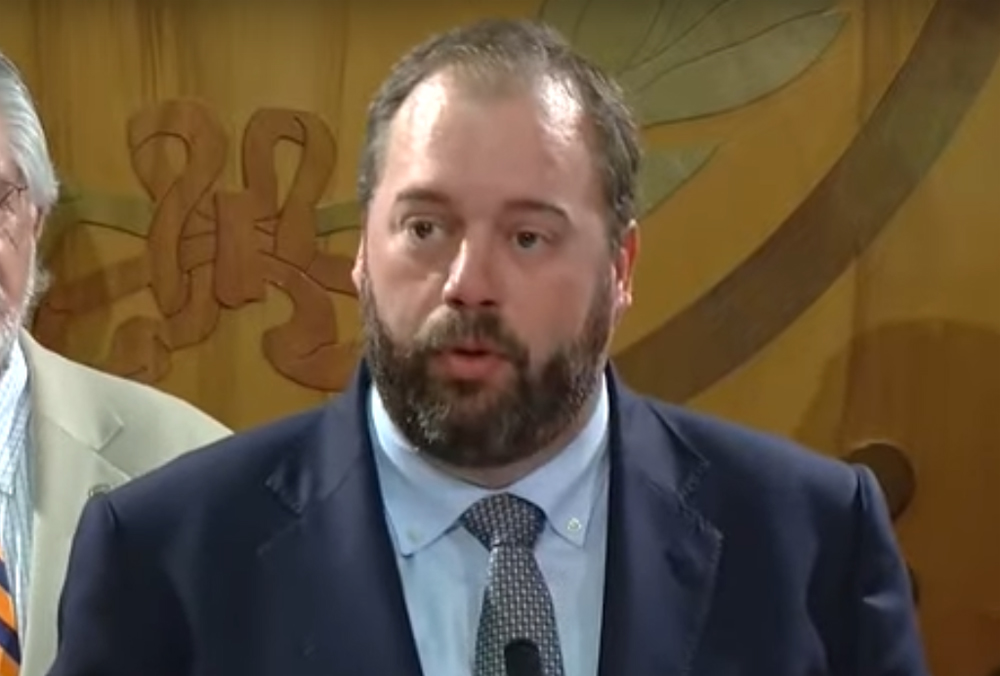
PHILADELPHIA — The Pennsylvania Public Utilities Commission has turned down a request by CSX Transportation to remove a 60-year-old bridge in Southwest Philadelphia, siding with the city of Philadelphia’s recommendation to replace the structure at a cost of $5 million.
The Philadelphia Inquirer reports that CSX filed the request to demolish the bridge on Cemetery Avenue — which was built in 1961 and is the third structure at a spot that has had a bridge since 1886 — saying it was no longer necessary and that alternate routes existed. But the newspaper says the case generated an “astonishing volume” of testimony, reports and rebuttals before the commission ruled on Feb. 3 that it would deny CSX’s request and adopt the recommendation of an administrative law judge who wrote that “abolishing the Crossing is not in the public interest, nor is it necessary and proper for the service, accommodation, convenience, or safety of the public.”
The administrative law judge, Darlene Heep, determined the railroad was responsible for repairs to the bridge while the city is responsible for the bridge approaches. CSX predecessor Baltimore & Ohio had committed to maintaining the structure after the 1961 rebuild, which replaced a bridge destroyed in a derailment.
The chief engineer of the Philadelphia Streets Department, Darin L. Gatti, told the newspaper the matter was “a very important fight for the city,” which is engaged in ongoing disputes with railroads over maintaining their property: “We were not about to give in lightly because the railroad doesn’t feel like maintaining [the bridge] anymore.”
The railroad had argued that if the city felt the bridge was necessary, it should maintain it.
Among those making the case for a bridge was a Philadelphia police official who said the bridge was the primary route to respond to 4,500 police calls in 2020, including 195 calls for “higher-grade felonies.” About 5,400 vehicles use the bridge daily, officials said.
CSX and its attorney did not respond to questions from the newspaper asking if it planned to appeal the decision, which is available at the PUC website.














Railroads are bad about keeping agreements their prior railroad made in a signed contract. Glad Philly held them to it..
B&O built the line in 1886. By then most of the City infrastructure was in place, making the city street the predecessor ROW. This is generally the case with CSX’s ex-B&O line from Baltimore to Philadelphia.
CSX is obligated to repair or replace the bridge. The railroad is in a cut, so replacement with a grade crossing is not feasible. The City could replace the bridge with a fill, and that would save CSX money, but it would also permanently shut down the railroad.
And one more item on my comment. On the east coast when Conrail was formed as a quasi US Government corporation, I can imagine a FRA/DOT bureaucrat passing the responsibility of railroad owned road bridges over to the roadway authorities. An argument could be made that they were all on the same DOT team at the time. I can’t say for certain this is what happened, but it may explain why you heard more about ex-B&O road bridges than ex-NYC or ex-PRR road bridges. Since the B&O never went through government receivership, it never had the opportunity to shed its overhead road bridges.
You have an excellent point here Peter. Many former Pennsy/NYC bridges that went through Conrail were removed. But there are tons of former legacy rail bridges that were built by the DOT that are still standing many years after the rails were pulled.
When CSX started ripping out the Monon in Indiana, the first thing they removed were the bridges CSX owned. The DOT ones remain today. Just the opposite with the Illinois Central. Illinois is littered with a bunch of these abandoned timber bridges over creeks and roads with maybe a steel beam or two
In general the entity crossing the bridge is responsible for maintaining it, but this is not a hard an fast rule. A common exception is when there was an existing road/railroad and another entity wishes to build another road/railroad on a underpass crossing. An agreement will need to be drafted, and the entity in possession of the existing thoroughfare generally has the upper hand in terms of dictating terms (possession is 9/10th the law they say.) On the east coast the railroads arrived after many roads were in place, so the railroads often found themselves responsible for road bridges over their railroads.
As you move west railroad owned overhead highway bridges are less common, but by no means unheard of. The classic humpback timber wagon bridges that crossed many graingers in the Midwest were typically railroad owned. These bridges have slowly disappeared from the landscape because the railroads at the time had more power in the rural Midwest and wrote agreements with stronger language regarding the maintenance of the bridges. They agreed to build and maintain the bridge, but maintain it to its 1910’s capacity. In later years the railroad would often refuse to upgrade these bridges for heavier trucks unless the road entity covered the replacement cost and took over all future maintenance. Over time the bridges either were pulled down because they were no longer useful, or replaced with modern bridges owned and maintained by the roadway authority.
The situation goes the other direction as well. There are several railroad bridges over interstates and modern roadways that are owned by the roadway authority. This is often the case when there was no existing bridge on the railroad and the roadway authority wished to build a completely new crossing. For these bridges the agreement often requires the roadway authority to maintain the bridge structure up to the “bottom of the ballast” and the railroad is responsible for the track maintenance.
Sounds about right. Years ago the old DL&W built a bridge on a county road to eliminate a grade crossing. About 15 years the bridge had to be replaced an NJT told the county you do it we don’t need the bridge to run our trains. So the county said fine we’ll put the grade crossing back in. Guess who built the new bridge?
I don’t know why this is the case, but I keep reading stories about how the B&O “owns” a large number of bridges when it comes to public streets. As a kid I remember the city I grew up in was in constant squabble with B&O and later CSX about fixing a bridge the B&O put up in 1923. Same deal, the city owned the approaches, but the railroad owned the span. It was the only bridge out of three with that arrangement.
After years of standoff followed by tit for tat as the city kept condemning the bridge, B&O/CSX would send a crew out, install new rivets, fix the sidewalk above with new ties and move on. The bridge vibrated terribly, and kids used to jump over the holes in the sidewalk left by rotted ties. CSX finally said they were going to remove it as it wasn’t needed.
After going to the state commerce commission after yet another condemnation by the municipality, CSX relented and replaced the 1923 span in 1993 with a current steel bridge, but “only over the tracks”. The town had to update the approaches themselves.
So today, this bridge has approaches that still have the original 1923 lattice work along the approach side walks, but then join a new bridge that doesn’t vibrate.
So the question begs, why doesn’t CSX get out of the public highway bridge business? If they are the predecessor ROW, shouldn’t the municipality or state be paying for it?
CSX should sign an agreement with the locality that they will pay to replace it, but they won’t own it anymore. That will get them out of the public bridge business.
Q: does the RoW at the Cemetery bridge need to have its vertical clearance raised to accommodate double stacks? Thanks.
CSX trying to get out of it’s obligations again.
No “City of Brotherly Love” projected here! High crime stats are a poor excuse for keeping the bridge open, in my opinion.
Disgusting. I wouldn’t get within a hundred miles of that city.
Charles, you are missing out on a lot of great things by avoiding Philly. However the city may not feel the same about you.
You may have missed the other stat the article mentions. 225 cars go over the bridge per hour. That’s a heavily travelled road. CSX also owns a mile long viaduct over 25th st. Concrete chunks continue to fall off and all CSX did is put up a net to catch the stuff. They have reneged on an agreement to rehab the viaduct. They are turning in to a bad neighbor.